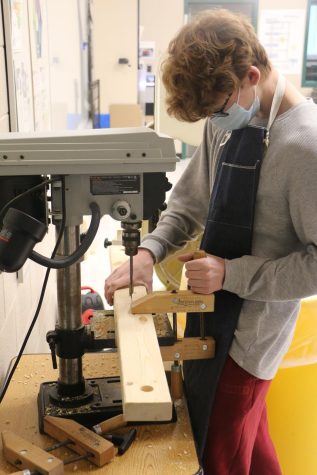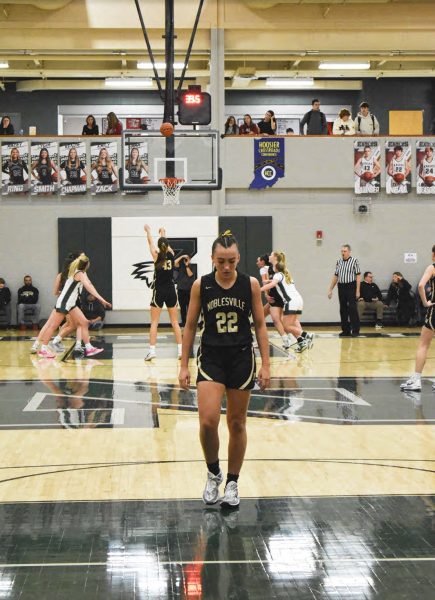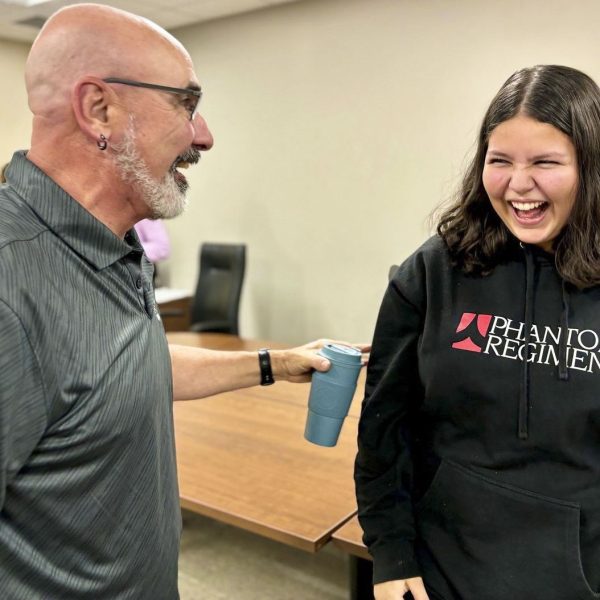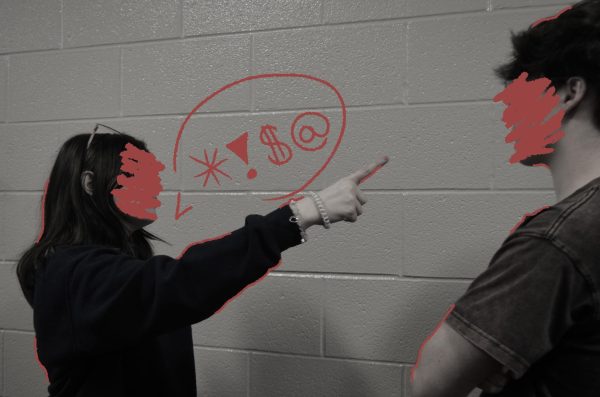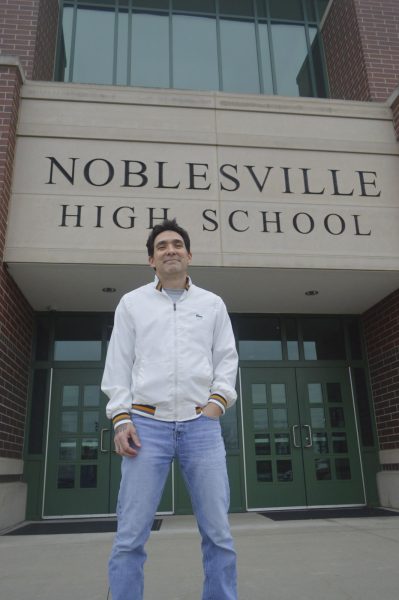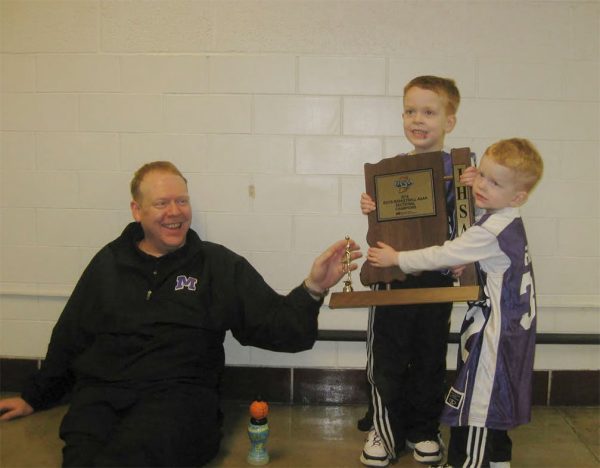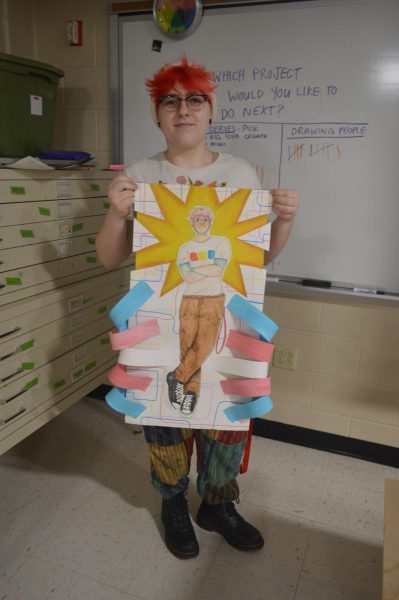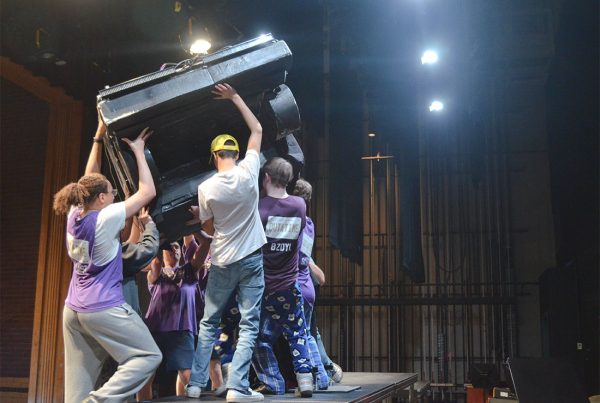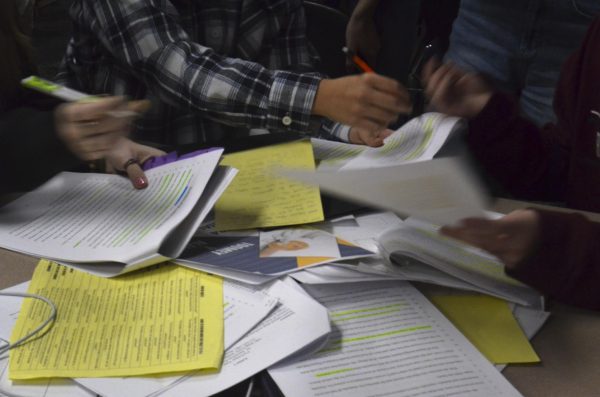Robot Realities
NHS staff analyze the potentials of modern robotics in both our school and society.
February 24, 2022
These days, it’s not too difficult to imagine a world where robots are commonplace in society. Already, robots are cleaning our floors, assisting in manufacturing, working in Amazon warehouses, and much more. It’s not really a stretch to see where robots could benefit our schools, our homes, and our everyday lives.
Recently, owing to the generous donations of Noblesville Schools Education Foundation, the NHS engineering department recently received a new robot to use in the various engineering courses. This has sparked some conversation and interest into the potential use of robots in our own lives here in Noblesville, or if it would even be a good idea to do so.
SciFi thrillers like Terminator, or the Pixar Animation’s Wall-E present robots through a more SciFi point of view. These representations are just two examples of the way that mass media portrays robots and automation. The truth about modern robotics is vastly different from what these portrayals show. Robots often lack the emotions present in humans such as happiness, anger, or sadness. Some in the engineering courses at NHS are wondering where robots could fit in our school.
At NHS, a robot is being coded to work around the school in places where human resources could then be put to use elsewhere around the school. The project is supervised by Wilkins and is worked on by a group of NHS students.
“I have a group of students using this to come up with a way to deliver packages from the loading dock to teachers in the building so that our maintenance and custodial staff can focus on other tasks,” said Andrew Wilkins, a PLTW Coordinator and Engineering teacher at NHS.
“Robotics is currently good at doing repetitive tasks like moving items from one place to another, dangerous tasks like welding parts, and are used to increase precision on manufactured products,” said Wilkins
These tasks that would usually be considered inconvenient for people, whether because they are too time-consuming or require more precision are great for robots as they are economical to operate and maintain. However, innovation will always offer new possibilities as ideas progress.
“We are finding more and more ways to utilize robots in our everyday lives. Who knows everywhere that they may be used in society?” said Brock Morrison, a PLTW and Technology teacher at NHS.
Somewhat ironically, the human aspect is often the most frequently discussed when it comes to the interaction between man and machine. There would be little gain to be had if implementing robotics and automation negatively impacted the human lives they were meant to improve.
“What we need to consider as a society and as engineers is how the use of robotics will limit the ability of individuals to provide for themselves and their families,” said Wilkins.
Some jobs will also be hard to replace with robots for a while, at least until artificial intelligence advances through innovation. Robots currently lack emotion, which severely limits their ability to do certain functions. For example, internet doctors. These sometimes require automation to diagnose a person based on their symptoms, automation can not provide the empathy that a human doctor can provide.
“There are a lot of jobs out there that require empathy and decision making that robots can’t replace,” said Morrison, “but it is fascinating how close we are coming with the artificial intelligence of these robots.”
One of the challenges of integrating autonomous robots into our society is finding a happy medium. There should not be too much integration of automation, but there also cannot be too little in today’s society. The future of that technology also has to be taken into consideration.
“Technology can do great things, but if we don’t think about why we are creating technology and what the long-term consequences are, we can find ourselves in a superficial and unfulfilling situation,” said Wilkins. “We’re already moving that direction, so I would say this just keeps pushing the line of taking away that which gives us purpose as humans.”
The robot gifted to NHS by Metro Plastics is evidence of this. On top of unloading and distributing shipments, it is being worked on by students to accomplish tasks that can benefit humanity without harming us at the same time.
“One group is designing a system that will protect wheelchairs in the cargo bay of airplanes so that people who require wheelchairs for mobility will be able to travel by plane without worrying about the condition of their wheelchair when they arrive.” said Wilkins.
According to Wilkins and Morrison, the future of robots in our society is a constantly evolving field with each new innovation providing more possibilities.
“It’s important for us to consider that just because we can do something doesn’t mean we should,” said Wilkins.